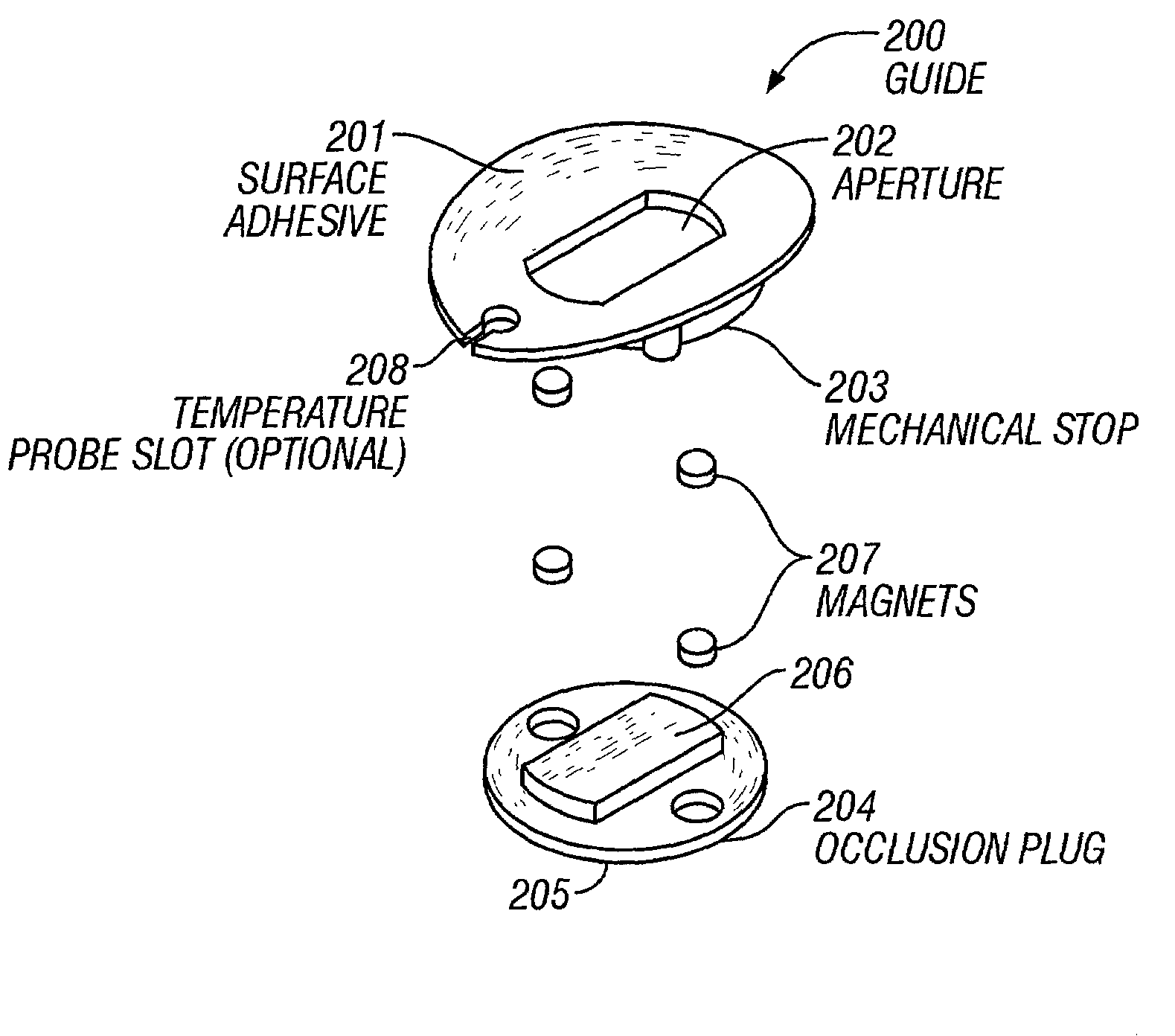Optical sampling interface system for in vivo measurement of tissue
a tissue and optical sampling technology, applied in the field of optical sampling interface systems, can solve the problems of death and disability, relatively unskilled operators or users, and the degree of optical sampling reproducibility
- Summary
- Abstract
- Description
- Claims
- Application Information
AI Technical Summary
Problems solved by technology
Method used
Image
Examples
example 2
[0113] As a further illustration of the benefit of the guide placement system, sixty measurements were performed on a single subject with and without the guide positioning system. All spectra were collected using a custom built scanning near-infrared spectrometer. The instrument collected intensity spectra in diffuse reflectance from the forearm in the wavelength range 1050-2450 nm. The spectral sampling interval was 1 nm and the signal-to-noise ratio at the peak intensity was approximately 90 dB. The detectors used in the study were a combination of Indium-Gallium-Arsenide (InGaAs) and extended InGaAs detectors. The optical configuration consisted of a simple fiber-optic interface to the skin with a small (<2 mm) distance between the illumination and detection fibers. Reference spectra were recorded prior to each sample measurement by scanning a 99% SPECTRALON reflectance material and absorbance was calculated according to Equation (2). A cradle was developed to position the arm ov...
example 3
[0114] As a test of the benefit of the method of occlusion, 60 measurements were performed on a single subject using the apparatus described in Example 2. In the first set of measurements, 60 samples were collected using the guide positioning system without occlusion and absorbance was calculated as previously described. In the second set of measurements, 60 samples were collected with the use of both the guide positioning system and the preferred method of occlusion (a plug in the guide aperture). FIG. 6 shows the absorbance spectra collected without occlusion (FIG. 6A) and the absorbance spectra collected after occlusion (FIG. 6B). The decrease in surface variation associated with the water bands demonstrated the improved optical sampling realized as a result of the method of occlusion.
[0115] While the invented optical probe placement guide allows highly repeatable probe placement at a targeted tissue measurement site, the invention may also be used to produce small sampling varia...
PUM
| Property | Measurement | Unit |
|---|---|---|
| wavelength | aaaaa | aaaaa |
| thick | aaaaa | aaaaa |
| thick | aaaaa | aaaaa |
Abstract
Description
Claims
Application Information
 Login to View More
Login to View More - R&D
- Intellectual Property
- Life Sciences
- Materials
- Tech Scout
- Unparalleled Data Quality
- Higher Quality Content
- 60% Fewer Hallucinations
Browse by: Latest US Patents, China's latest patents, Technical Efficacy Thesaurus, Application Domain, Technology Topic, Popular Technical Reports.
© 2025 PatSnap. All rights reserved.Legal|Privacy policy|Modern Slavery Act Transparency Statement|Sitemap|About US| Contact US: help@patsnap.com



